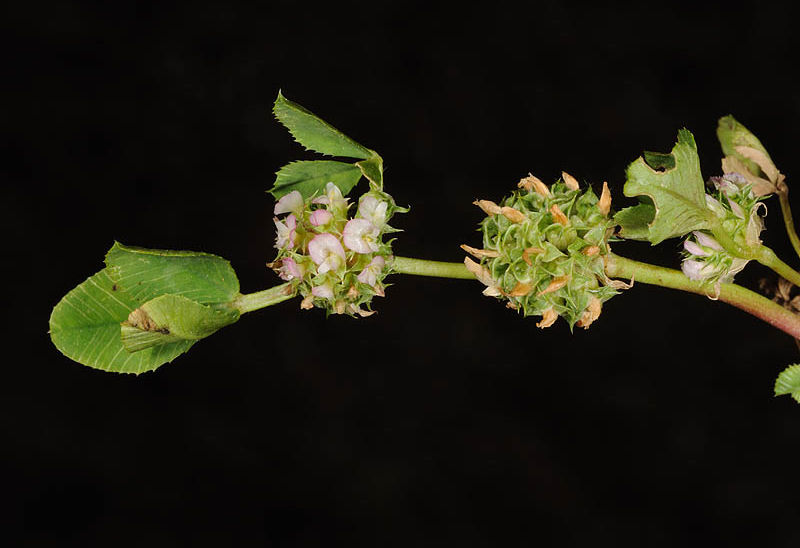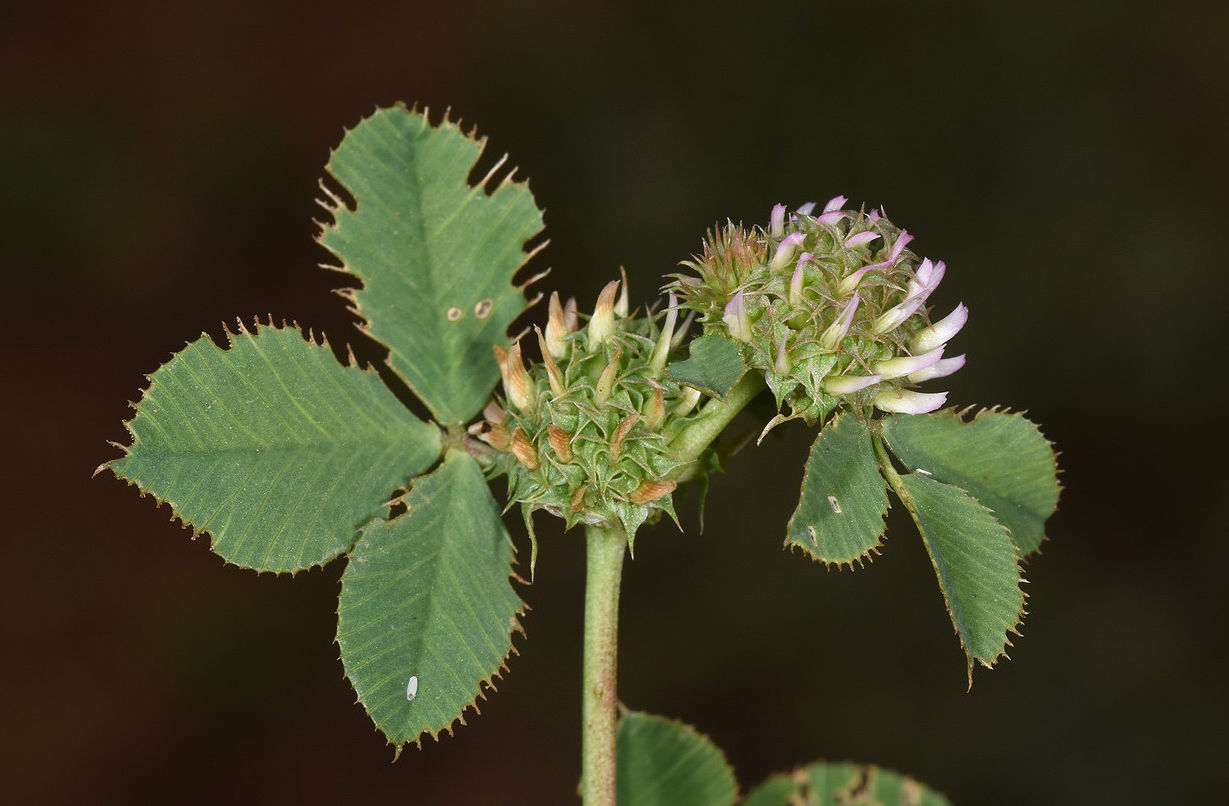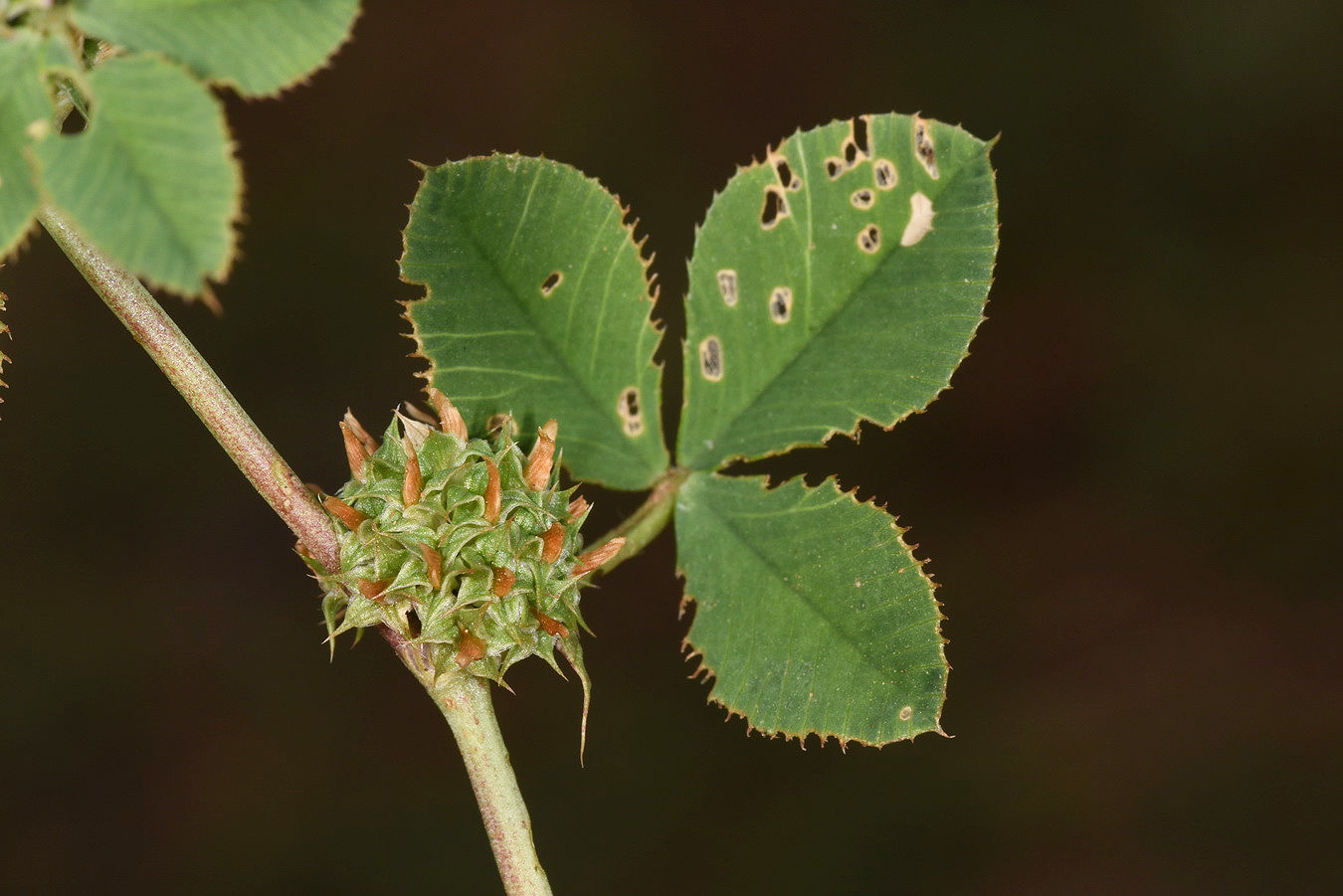Clustered Clover
trifolium glomeratum
Also known as: ["Cluster Clover","Small Cluster Clover"]
Overview
A small annual clover species with globular clusters of pinkish-white flowers, native to Europe and parts of Asia.
Benefits & Perks
["wildlife attractant (bees, butterflies, birds)","drought tolerant","low maintenance"]
Botanical Classification
| Phylum: | Magnoliophyta |
| Class: | Magnoliopsida |
| Order: | Fabales |
| Family: | Fabaceae |
| Genus: | Trifolium |
| Botanical Name: | Trifolium glomeratum |
Plant Characteristics
Basic Information
- Category: Flowers
- Suitable Location: garden bed or container in a location with good air circulation
- Suitable For:
- Is Weed: No
- Allergenicity: low
Environmental Needs
- Climate: {"temperatureRange":"5–30°C"}
- Hardiness: {"zones":"7–10"}
- Misting: rarely required, only if ambient humidity is very low
- Drainage: Fast-draining to prevent waterlogging.
- Soil Type: Well-draining, loamy soil with added organic matter; can tolerate poor soils but thrives with enrichment.
Maintenance Level
- Maintenance Level: very low
- Toughness Level: high
- Pruning Frequency: Light pruning can be done as needed; major pruning in early spring before new growth begins.
- Pruning Intensity: Light to moderate; avoid heavy pruning unless necessary to control size or shape.
Care Details
Ideal Sunlight Coverage:
Full sun to partial shade; 6–8 hours of direct sunlight per day, with some afternoon shade in hot climates.
Sunlight Tolerance Tips:
Acclimate plants gradually to intense sunlight; protect from harsh midday sun; adjust placement based on seasonal light changes.
Care Requirements
Care Difficulty
very easymoderate
Sunlight
full sun to partial shade
Rotate plants weekly for even growth; use sheer curtains to filter intense light; monitor for signs of sunburn.
Watering
every 7–10 days during active growth, reduce in winter
Water thoroughly but infrequently; ensure soil dries between waterings; avoid wetting foliage.
Soil
well-draining, loamy soil with moderate organic content
pH: Slightly acidic to neutral, pH 6.0–7.0.
Avoid heavy clay soils; ensure pots have drainage holes; test soil pH annually.
Temperature
Prefers cool to moderate temperatures, 60–75°F (15–24°C); tolerates mild frosts but avoids extreme heat.
Avoid placing near drafty windows or heat sources; maintain consistent temperatures; protect from sudden temperature swings.
Fertilizing
every 4–6 weeks during growing season with balanced liquid fertilizer
Fertilize in the morning for better absorption; avoid fertilizing dry soil; flush soil occasionally to prevent salt buildup.
Propagation
Methods
Stem cuttings or division; stem cuttings are more common for home growers.
Step-by-Step Propagation Guide
- Take a 4–6 inch cutting.
- Remove lower leaves.
- Dip in rooting hormone (optional).
- Plant in medium.
- Keep moist and warm.
Best Time: Spring or early summer when the plant is actively growing.
Environment
Warm, humid environment with indirect light; maintain consistent moisture.
Medium
Well-draining potting mix with perlite or sand; can also root in water initially.
Hormone
Rooting hormone is optional but recommended for faster rooting.
Timeline
Roots typically form in 2–4 weeks; new growth may appear in 4–6 weeks.
Tools Needed
Pruning shears, rooting hormone, small pots, well-draining medium.
Quick Tips
Use clean tools to prevent disease; maintain high humidity with a plastic bag or propagator; avoid direct sunlight.
Pruning & Repotting
Pruning Guide
Method
Pinch back tips to encourage branching; deadhead spent flowers by cutting just above a leaf node.
Pruning Plan
Prune to maintain shape, encourage bushier growth, and remove spent flowers to promote reblooming.
Tools
Clean, sharp pruning shears or scissors.
Checklist
Sterilize tools; prune in early morning; remove dead or damaged growth; make clean cuts just above a node.
Repotting Guide
Best Season
Early spring before active growth begins.
Pot Size
Increase pot size by 1–2 inches in diameter; ensure good drainage holes.
Method
Gently remove plant; trim any circling roots; place in a slightly larger pot with fresh soil; water thoroughly.
Suggestions
Repot every 1–2 years or when roots fill the pot; beneficial for maintaining vigor and preventing root-bound conditions.
Checklist
Choose appropriate pot size; prepare fresh soil mix; handle roots gently; water after repotting.
Advanced Care Tips
Watering Mastery
Watering Checklist
Check soil moisture before watering; water deeply; ensure drainage; avoid overhead watering.
How to Apply Water Properly
Water at the base of the plant, ensuring moisture reaches the root zone; allow excess water to drain away; water early in the day to minimize evaporation.
Watering Schedule Tips
Water deeply once the top inch of soil feels dry; reduce frequency in winter to prevent root rot.
Soil Improvement
Add compost or well-rotted manure for fertility; incorporate perlite or sand for drainage; use mulch to retain moisture.
Temperature Stress Management
Signs of Temperature Issues
Wilting, yellowing leaves, stunted growth, or bud drop in response to temperature stress.
Cold Stress
Slows growth and may cause leaf discoloration or dieback in prolonged cold; frost can damage tender tissues.
Solution: Provide frost protection in cold climates; move potted plants indoors during freezes; use mulch to insulate roots.
Hot Stress
Leaves may scorch, wilt, or drop; flowering may be reduced in excessive heat.
Solution: Provide shade during peak heat; increase watering frequency; use mulch to retain soil moisture.
Fertilizing Guide
Fertilizing Checklist
Check fertilizer label for NPK ratio; dilute correctly; apply during growing season; avoid contact with foliage.
Fertilizing Method
Use a balanced, water-soluble fertilizer diluted to half strength; apply every 4–6 weeks during active growth; reduce or stop in winter.
Common Problems & Solutions
Toxicity Warning
Cats
Non-toxicTrifolium glomeratum is not considered toxic to cats. It does not produce any known compounds that are harmful to feline physiology.
🌿 Toxic Parts:
⚡ Toxic If:
if eaten
Dogs
Non-toxicTrifolium glomeratum is not considered toxic to dogs. It is a non-hazardous plant that does not pose a significant risk to canine health when ingested.
🌿 Toxic Parts:
⚡ Toxic If:
if eaten
Humans
Non-toxicTrifolium glomeratum is generally considered non-toxic to humans. It is a common wildflower and forage plant with no known significant toxic effects on human physiology.
🌿 Toxic Parts:
⚡ Toxic If:
if eaten
Frequently Asked Questions
Q: Is Trifolium glomeratum toxic to pets?
A: No, it is non-toxic to dogs and cats.
Q: How often should I water this plant?
A: Water sparingly, as it is drought-tolerant and prefers well-drained soil.
Q: Does this plant attract wildlife?
A: Yes, it attracts bees, butterflies, and birds due to its nectar-rich flowers.
Quick Reference
| Family: | Fabaceae |
| Care: | very easy |
| Light: | full sun to partial shade |
| Water: | every 7–10 days during activ |
Get Expert Care Tips
Download the Plantious app for personalized care reminders and plant identification!
Google Play App Store








